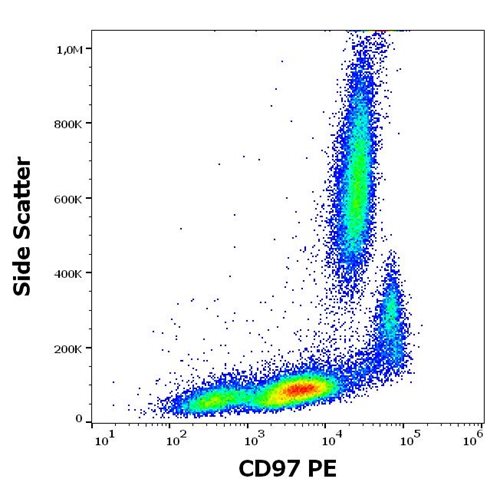Recombinant Human Heat Shock Protein-Binding Protein 1
Shipping Info:
For estimated delivery dates, please contact us at [email protected]
| Amount : | 10 µg |
| Purification : | Greater than 95% as determined by SDS-PAGE. |
| Content : | HSPBP1 solution containing 20mM Tris-HCl buffer (pH 8.0), 2mM DTT, 30% glycerol, 2mM EDTA and 0.1M NaCl. |
| Storage condition : | HSPBP1 Human Recombinant although stable at 4°C for 1 week, should be stored below -18°C. Please prevent freeze thaw cycles. |
| AA sequence : | MGSSHHHHHH SSGLVPRGSH MSDEGSRGSR LPLALPPASQ GCSSGGGGGG GGGSSAGGSG NSRPPRNLQG LLQMAITAGS EEPDPPPEPM SEERRQWLQE AMSAAFRGQR EEVEQMKSCL RVLSQPMPPT AGEAEQAADQ QEREGALELL ADLCENMDNA ADFCQLSGMH LLVGRYLEAG AAGLRWRAAQ LIGTCSQNVA AIQEQVLGLG ALRKLLRLLD RDACDTVRVK ALFAISCLVR EQEAGLLQFL RLDGFSVLMR AMQQQVQKLK VKSAFLLQNL LVGHPEHKGT LCSMGMVQQL VALVRTEHSP FHEHVLGALC SLVTDFPQGV RECREPELGL EELLRHRCQL LQQHEEYQEE LEFCEKLLQT CFSSPADDSM DR. |
| Alternative Name : | Hsp70-binding protein 1, Heat shock protein-binding protein 1, Hsp70-interacting protein 1, Hsp70-binding protein 2, Hsp70-interacting protein 2, HspBP1, HspBP2, HSPBP1, HSPBP, FES1. |
Source : Escherichia Coli.
HSPBP1 Human Recombinant produced in E.Coli is a single, non-glycosylated,
polypeptide chain containing 382 amino acids (1-362 a.a.) and having a molecular mass of 41.6kDa. HSPBP1 is fused to a 20 amino acid His Tag at N-terminus and purified by proprietary chromatographic techniques.
Hsp70-binding protein 1 (HSPBP1) is a member of a family of eukaryotic proteins identified as nucleotide exchange factors for HSP 70 that exhibit varying degrees of compartment and species specificity. HSPBP1 is localized mainly in cytoplasm and nucleus but is also found extracellularly. HSPBP1 is mostly expressed in heart and skeletal muscle .HSPBP1 binds to HSP 70, inhibits its activity and promotes dissociation of nucleotides from the HSP 70 ATPase domain. In addition, HSPBP1 inhibits HSPA1A chaperone activity by changing the conformation of the ATP-binding domain of HSPA1A and obstructing the ATP binding. HSPBP1 may also have a role in tumor (dys)regulation of chaperone proteins. Furthermore, HSPBP1 hinders ubiquitination mediated by STUB1 and inhibits chaperone-assisted degradation of immature CFTR.
For Research Use Only. Not for use in diagnostic/therapeutics procedures.
|
There are currently no product reviews
|


















.png)









